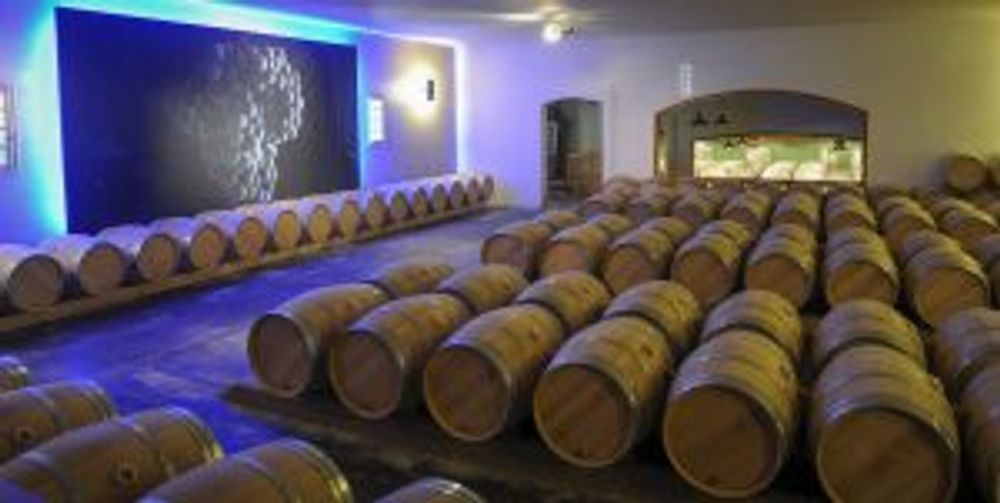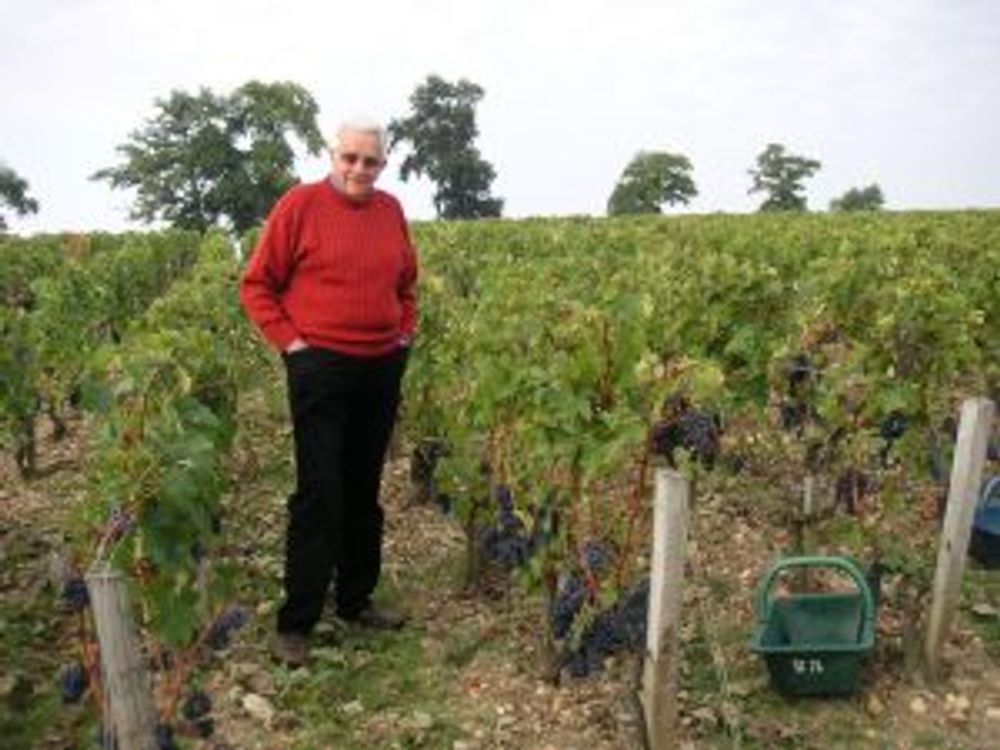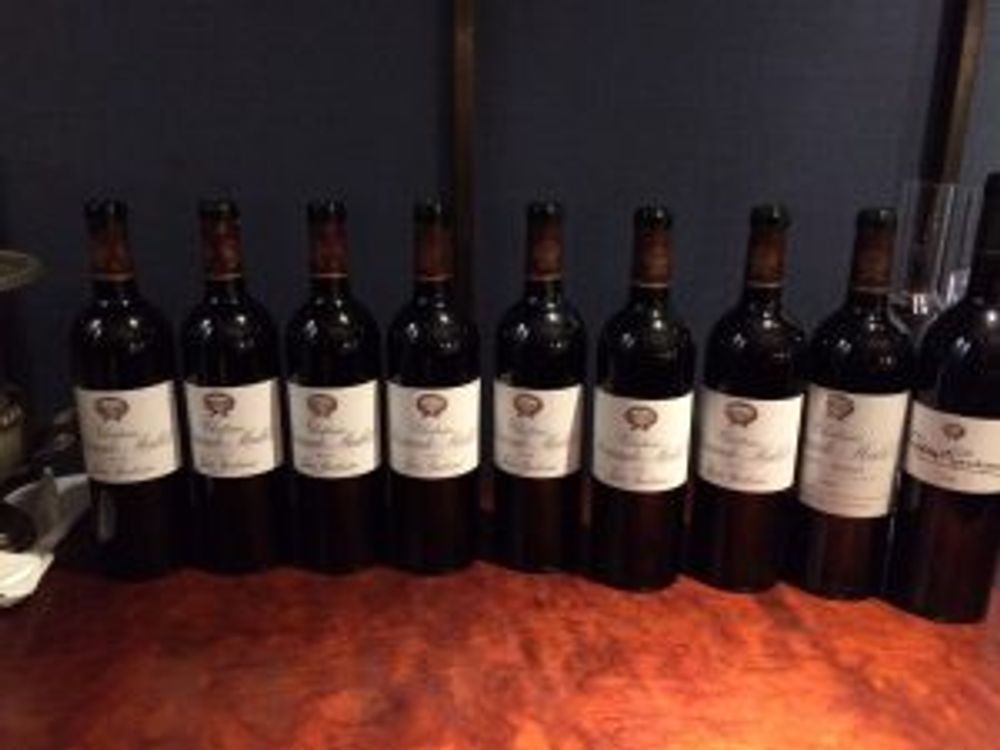An 11-wine tasting dinner was the perfect setting to find out the background Sociando-Mallet – one of Bordeaux’s sleeping giants.
Chateau Sociando-Mallet is one of those delightful anomalies of Bordeaux.
The excellence of its wines are such that it could rub shoulders with Medoc classed growths without the slightest risk of feeling out of place in such exalted company. Yet it somehow slipped through the net in the 1855 classification.

Nor, bizarrely, is it a Cru Bourgeois, although the reason for this is simply that owner Jean Gautreau thinks it should reside at a level above, largely due to its exceptional terroir and superb aspect. He has, therefore, never sought cru bourgeois status.

And La Place would seem to agree, consistently valuing Sociando-Mallet at fourth or fifth growth prices. It remains simply an AOC Haut-Medoc wine – one to shout about from the rooftops. Great quality, good value. Over 100 negociants sell the wine – a huge sales force.
A memorable vertical tasting of the chateau’s wines over a dinner in London, organised by Richard Bampfield MW, underlined Sociando’s undoubted consistency of quality.
Under the guidance of Pascale Thiel, the estate’s commercial director, and Sybil Marquet, her deputy, we began with the second wine, La Demoiselle de Sociando-Mallet, (the 2014 and 2013 vintages), and then progressed on to the Chateau wine from 2012, 2011, 2010, 2009, 2008, 2006, 2005 and 2001.
To end with, we were treated to the Jean Gautreau 1998, production of which was limited to 65 barrels.
Parker rates Sociando-Mallet as one of Bordeaux’s greatest over-achievers
More on the tasting later, but first a little on the chateau’s history and location, as it is pertinent.
When Gautreau bought the estate in 1969, its buildings were ‘completely run-down’, as he recalls, and only five hectares were under vine. Now, he has increased that to 85 hectares under vine, with 75 reserved for production of Chateau Sociando-Mallet and 10 for the Demoiselle.

Jean Gautreau in the vines, 2014
The average age of the vines is 35 years, with 55% being Cabernet Sauvignon, 40% Merlot and 5% Cabernet Franc. This was the exact assemblage for all the wines tasted except the Demoiselles (which had around two-thirds Merlot).
The extraordinary vineyard sites, which lie on gravel over a clay-limestone subsoil sloping down to the river, are unusual in that they ripen quicker than more southerly counterparts, and are therefore picked earlier.
“Regardless of vintage conditions, Jean Gautreau does everything right,” says Robert Parker, who rates Sociando as ‘one of Bordeaux’s greatest over-achievers.’
Now to the wines….
The Chateau’s wines are always matured in 100% new barrels (the less complex Demoiselle seeing 25%). This is rare for a non-classed growth, but the fact the wines absorb this amount of new oak so comfortably underlines their structure and quality.

Looking back through my tasting notes, the common thread was how beautifully integrated the tannins were – being especially silky in 2001, 2006 & 2010. That they were more overt in the more closed 2012 was no great surprise, that being the youngest Chateau wine tasted.
The Demoiselle 2104 had notably soft tannins, as did the charming 2013 (ultra low-yielding with 28 hl/ha due to the challenging weather that year).

The 2011 was delightfully feminine, a debutante amongst older ladies. Lovely fruit, well-integrated tannins and good length were its hallmarks. “A real revelation in a vintage such as 2011,” wrote Parker.
The 2009 was also very attractive, as one would expect of that vintage, although it was more tannic than many other 2009s, some of which are losing shape.
The 2010, with its incredible structure, gorgeous texture, multi-layered complexity, and wonderful earthy aromas and intensity of flavour, was a head-turner.
The 2001 certainly turned Parker’s head. “It must be tasted to be believed; it tastes more like a first-growth than an unclassified offering,” he wrote in 2004, calling it a massive sleeper. By 2016, though, its tannins had become oh so silky, while the lovely red fruit had lost none of its intensity. Extremely long, it went really well with the lamb we ate.
While the 2008 and, in particular, the 2006 were just starting to take on some tertiary development, the Jean Gautreau 1998 was a special wine with which to finish. Very long and complex, with great balance and fruit intensity, this was a fitting finale to a magnificent tasting.

Pascale Thiel (commercial director, Left) and Sybil Marquet (her deputy), at the memorable London tasting









































